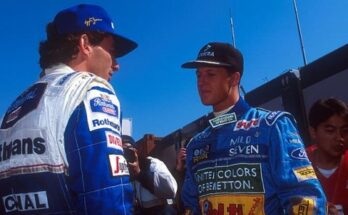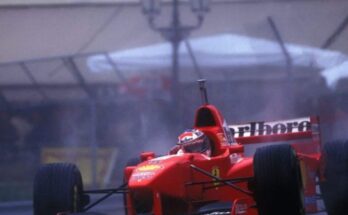In the 2000 Formula 1 season, Michael Schumacher achieved a monumental milestone by securing his first World Drivers’ Championship title with Ferrari. The decisive race took place at Suzuka, Japan, on October 8, 2000, against fierce competitor Mika Häkkinen. This article delves into the thrilling details of that race and its significance in the world of motorsport.
Setting the Scene: Suzuka 2000
The 2000 Japanese Grand Prix was held under overcast skies, with dry conditions prevailing throughout the 53-lap race. Approximately 151,000 fans gathered at the iconic Suzuka Circuit to witness this pivotal showdown. Forecasters had predicted rain, adding a layer of suspense to the day’s events, but the track remained clear for most of the race.
Pre-Race Tensions
Before the race began, a notable incident occurred during the final parade lap when Häkkinen’s McLaren developed a hydraulic leak, causing smoke to emit from the car. Despite this setback, he managed to start the race, setting the stage for a thrilling contest.
The Race Begins: A Dramatic Start
As the lights went out, Häkkinen demonstrated impressive acceleration, securing an early lead over Schumacher. The two drivers quickly pulled away from the pack, with Häkkinen defending his position with expert maneuvering.
Lap One Highlights
By the end of the first lap, Häkkinen had established an eight-tenths-of-a-second lead over Schumacher, with David Coulthard trailing in third. The initial laps showcased a fierce battle between the two leading drivers, with Schumacher trying to close the gap while avoiding potential collisions behind him.
Mid-Race Developments: Strategy and Pit Stops
As the race progressed, the dynamics shifted. Häkkinen maintained his lead until the first round of pit stops began. On lap 22, the McLaren team called Häkkinen in for an early stop, which proved crucial as Schumacher took the lead temporarily.
The Weather Factor
A light drizzle began to fall around lap four, making the track slippery but not significantly impacting tire strategy. However, as the race approached its latter stages, rain intensified, adding to the tension and uncertainty for the drivers.
The Final Laps: A Battle for Glory
By lap 37, Schumacher had re-established his lead after the second round of pit stops. Despite Häkkinen’s attempts to close the gap, Schumacher maintained control of the race. The final laps saw Schumacher’s skill and focus shine through as he navigated the increasingly challenging conditions.
Crossing the Finish Line
Michael Schumacher crossed the finish line first, clinching his eighth victory of the season and securing the 2000 Drivers’ Championship. His final time was 1:29:53.435, averaging a remarkable speed of 207.316 km/h (128.820 mph). Häkkinen finished just 1.8 seconds behind, marking a poignant moment in his championship quest.
Historical Significance: Ferrari’s Triumph
Schumacher’s victory not only marked his personal triumph but also ended a 21-year championship drought for Ferrari, the team’s first title since Jody Scheckter in 1979. The win solidified Schumacher’s legacy as one of the greatest drivers in Formula 1 history and set the stage for a dominant era for Ferrari in the early 2000s.
Conclusion: A Race for the Ages
The 2000 Japanese Grand Prix remains a cornerstone in the annals of Formula 1 history. Michael Schumacher’s fierce competition with Mika Häkkinen, combined with strategic brilliance and sheer determination, culminated in a memorable race that fans still celebrate today. Schumacher’s first title with Ferrari not only changed the course of his career but also redefined the landscape of motorsport, ushering in a new era of dominance for the Scuderia.
By capturing the essence of this historic race, we celebrate the spirit of competition and the relentless pursuit of excellence in Formula 1 racing.






